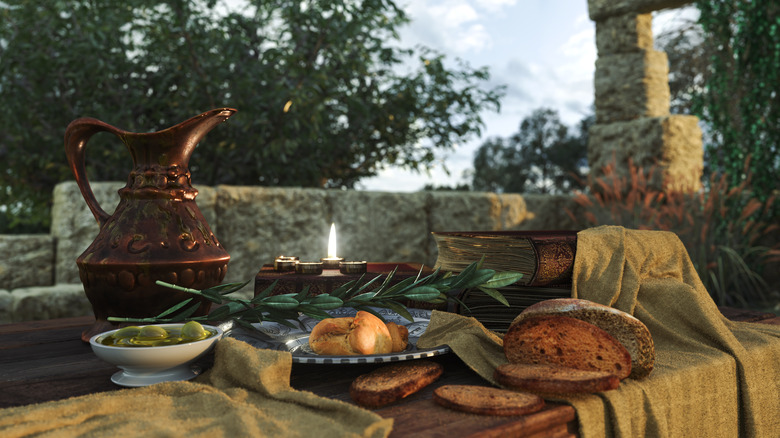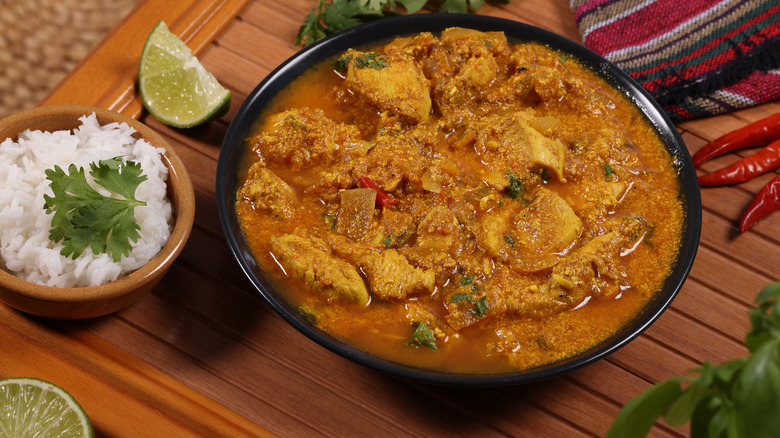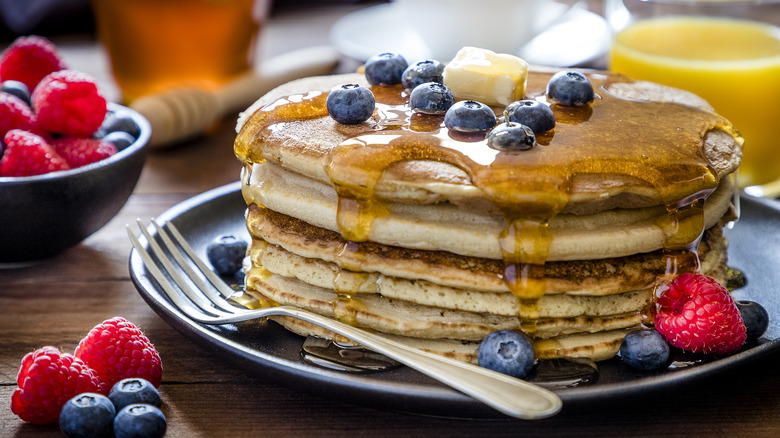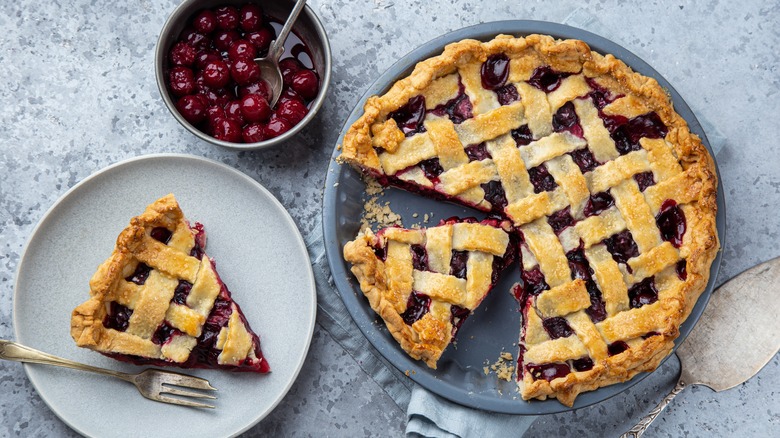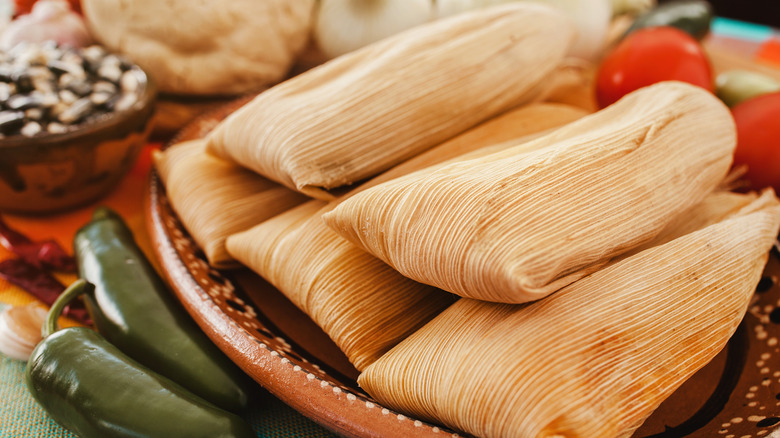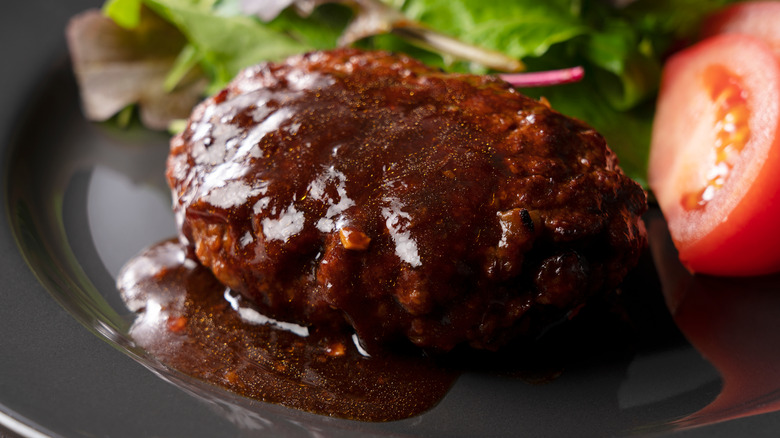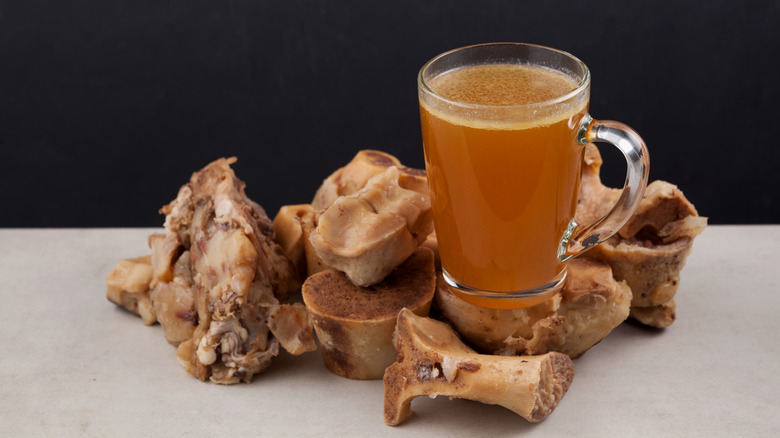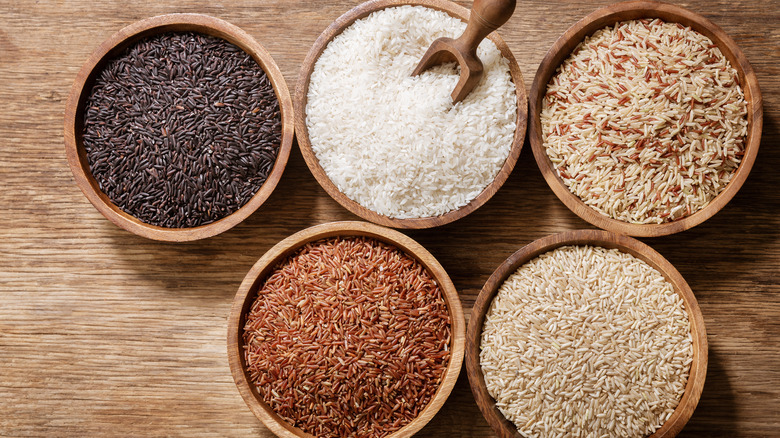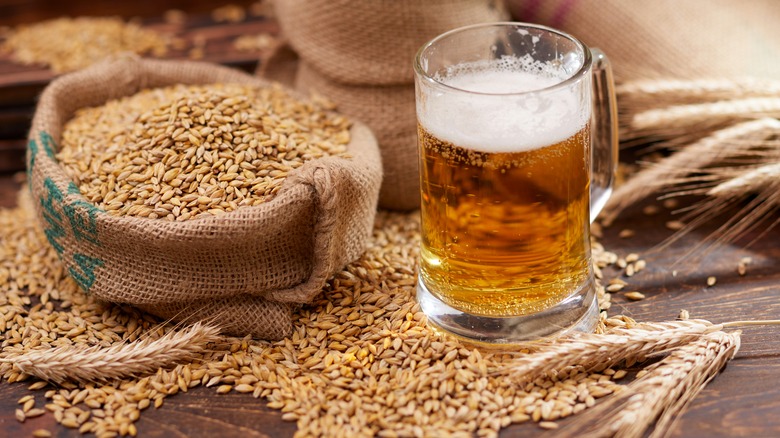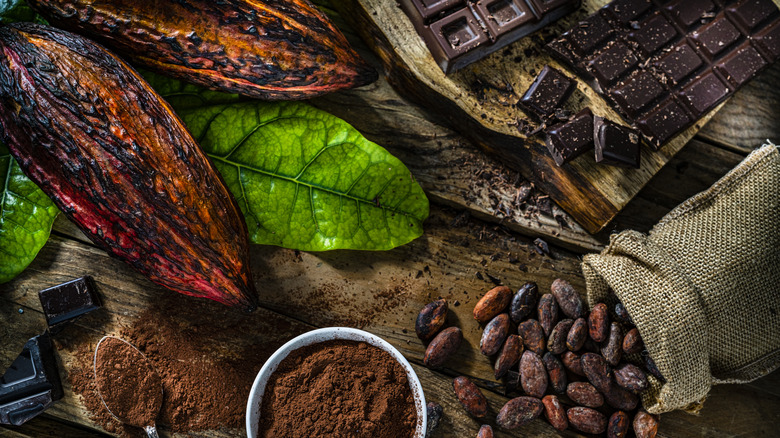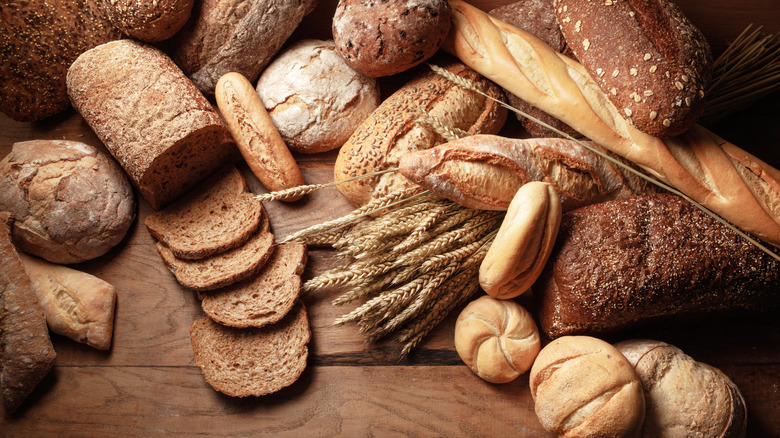The World's 10 Oldest Dishes And Where They Are Today
Everyone everywhere eats for survival, and hopefully sometimes for enjoyment. Food is universal, and it unites us. Food is part of our cultural identities, an element of religious rites, and an always significant component of celebrations. In some cases, the foods we eat today have not changed much since those their origins.
Grains have been found in Egyptian tombs, 5000-year-old remains in Finland, and a site in Israel dating back 23,000 years. Recently, a mosaic depicting a meal including pizza (more precisely, a flatbread with ingredients on top) has been discovered in the ruins of Pompeii. Food isn't only about survival. Creating dishes is about self-expression, family, community, and, in some cases, social status.
A series of recipes was found on three clay tablets in modern-day Kuwait and Iraq. The tablets contained recipes for stews, broths, and bread recipes, all dating roughly around 1750 BC. The recipes allowed scholars to see how dishes like lamb stew have evolved since their origins.
Writing down these lists of recipes illustrates the importance of preserving recipes, as keeping many older dishes alive and recreating them connects us with our histories. Creating these dishes shows how people have come together to celebrate through food throughout history.
Indian curry, circa 2200-2500 B.C.
Curry, originating from the Tamil word "kari," has become a catch-all phrase for an Indian, Caribbean, or Thai dish featuring a sauce or gravy base made with proteins and spices, usually served over rice. Curry as a dish in India began occurring in the 17th century after British traders started calling most Indian dishes in India "curry."
However, the dish of spiced meats in sauce dates much further back by roughly 4,000 years to excavations of the Indus people in Mohenjo-daro, Pakistan. The discovery of a "carbonized clove of garlic," ginger, and turmeric — all essential elements in modern Indian dishes — were in the residue of cooking pots and in human teeth. This research is now the oldest known record of turmeric and ginger!
The curry dish we know today did not occur until the 16th century, when it arrived through Portuguese and British trading and colonization in India. When the British colonized India and traded with Portuguese traders, the Portuguese transliterated "caree" from the original "kari." Both Portugal and Britain attached "caree," or "curee" to almost any sauce-based dish from the region.
In the Indian language, "curry" is an anglicized word used when speaking English, referring to the dish, not the spice. In India, each dish has its own name based on spices and flavorings, such as vindaloo, tikka masala, or korma.
Pancakes, circa 11650 B.C.
When you think of ancient dishes, pancakes might not come to mind. Pancakes (more precisely, the tools and grains to make something more closely resembling hardtack) date back more than 70,000 years. In the Shanidar Cave system in Iraq, researchers in 2022 were able to analyze food remains that used various ingredients, and processes. Researchers recreated their findings by pounding seeds soaked in water into a paste, forming the paste into patties, then cooking. The results were early pancakes.
People made another form 30,000 years ago in the Stone Age, although they were much more rudimentary than modern-day pancakes. Grinding tools found in the Italian Alps with a residue of fern, cattail, and ash indicate a type of flat cake was made. Both ancient Greeks and Romans ate pancakes with honey, and Queen Elizabeth's court made pancakes with milk. Ale and wine were also acceptable substitutes if milk wasn't available.
Today, pancakes can be found in "international" houses and diners across the United States. Even if they don't replicate the specifics of ancient pancakes, the tether still remains.
Linzer Torte, circa 1653
The Austrian Linzer torte is considered one of the world's oldest cake recipes. The Linzer torte is said to have originated in Linz, Austria, where a recipe was found dating from 1696. Another, older variation was found in a Veronese recipe dated 1653. Whichever version you want to go with though, the Linzer torte is based on an extremely old recipe that hasn't changed much.
If you're unfamiliar with a Linzer torte, it is a shortcrust pastry made from sugar, almonds, butter, flour, and spices. The crust is crumbly, traditionally filled with a red currant jam, and served like a pie. Other fillings like raspberry, apricot, or plum jams are not uncommon. The torte is topped with a classic lattice made with the same dough as the crust.
Linzer torte cookies are sandwich cookies that are tasty, smaller, and sometimes more creative than the torte. Whereas the torte is made from more crumbly, shortcrust dough, cookies are sometimes made with almond flour. The almond flour gives the cookies an almond shortbread texture and flavor. Fillings will vary from traditional redcurrant to lemon custard dusted with either powdered or granulated sugar. You can usually find the torte during holidays, and the cookies are found year-round in bakeries.
Tamales, circa 5000 B.C.
Tamales — tasty bundles of meat encased in masa — have a long history that dates back over 10,000 years. Tamales were a protein-rich, portable food carried by soldiers and hunters. The corn husk wrapping not only holds the corn-based masa dough together during cooking but also provides protection while traveling, like cute, corn sandwich baggies.
To cook tamales, families work together to create the dish in large batches. Everyone gets to take home a few dozen to give away to friends or save and eat throughout the rest of the year. The original cooks and generations after had to grind the corn by hand, then mix with it lard. Today, there are premade masa mixes or ground masa flour which helps expedite the process. While premixed masa does save time, the various fillings can still take long amounts to cook. The assembly and the time to steam batches of tamales are also time-consuming processes. Tamales are traditionally filled with pork, chicken, or shredded beef with beans and rice.
There are also sweet tamales. Combine sugar, cinnamon, butter, and vanilla to the masa dough, then add dulce de leche with nuts, fruit preserves with cream cheese, or fruit pie fillings. All of these options make incredible desserts.
Burgers, circa 100 century A.D.
When you think about a hamburger, it's safe to say they do not conjure thoughts of ancient dishes. To the modern-day eater, burgers are a ground beef patty or two stacked with lettuce, pickles, mustard, and onions and sandwiched between bread buns. If you're lucky, there might be some bacon and cheese on your burger, too.
Historically, the basic hamburger called the isicia omentata was a dish made with minced meats, caul fat, wine, pepper, pine nuts, and a fish sauce called garum. The ingredients were pressed together into patties and cooked over an open flame. As the Romans conquered Britain, they also brought with them early street food vending stations called thermopolium and spread the early burgers. In 19th century America, the "Hamburg" steak was popular in New York restaurants, which was eventually placed between slices of bread for the sandwich we know today.
With industrialization and advances such as large-scale meat processing and refrigerator train cars, ground beef became more accessible and affordable to the masses. In the early 1900s, restaurants like White Castle started to put the fast-food version of the hamburger into Americans' hands. Currently, there are over 91,000 burger restaurants throughout the United States (via IBIS World).
Mesopotamian Stew, circa 2140 B.C., and bone broth, circa 400 B.C.
One of the world's other old stew recipes, the Babylonian lamb stew, was decoded from the Sumerian tablets in 2140 B.C. The tablets were written in Akkadian and are considered the oldest known written recipe. However, the scholars who deciphered the recipes said the tablets read more like detailed shopping lists as opposed to instructions. While some of these recipes do not translate to known ingredients today, the recipe for a Babylonian stew was recreated by Yale University into a usable recipe containing a hearty leg of lamb or mutton with pork belly, beets, and other items.
Chinese bone soup is the oldest known bowl or pot of soup recovered. The remains were found in a tomb in China dating 2,400 years old. Researchers found a small, bronze cooking pot while excavating a tomb to make way for an extension of the airport in Xian. The remains of broth and bones had oxidized inside. Scientists were able to confirm the contents, making the 2,400-year-old soup the first recorded Chinese bone broth soup, which is still made today. In recent years, food trends have seen a resurgence of bone soup or bone broth for its delicious, velvety texture, rich flavor, and health benefits.
Rice dishes, circa 4530 B.C.
Rice as a domesticated food source has been around for centuries, but for how long is debated. Excavations in India found evidence of rice cultivation dating back to about 4530 B.C. Other scholars claim evidence of cultivated rice was first found in China, dating to 2800 B.C. Either way, rice has been a part of our diets for a very long time throughout most of the world.
Rice pilaf is a rice dish cooked with broth or stock, spices, and other ingredients such as meat or vegetables. The first known recorded evidence of pilaf dates back to Greece, where it was mentioned by Archestratus in his cookbook "Gastrology." Recipes for pilaf took one of two contested paths. The dish either followed the path of the Persians as they conquered parts of Asia, or the dish originated in India and spread from there. There are actually many varieties of pilaf, each with its own delicious variation points to parts of the Middle East, Europe, and Asia.
Beer, circa 3500 B.C.
With an over $115 billion retail market in the U.S. (via Brewer's Association), we probably don't have to tell you where beer is today. You can find cans in grocery stores or gas station minimarts. Microbreweries creating their own craft brews are one of the main staples of restaurants across the nation. We know brands by their mascots or Super Bowl commercials. Beer is almost everywhere! In the United States, beer production was second to China, producing approximately 204 million hectoliters, according to Statista.
Beer, translated from German "bier," or "to drink," originated in China but did not become popular until the beverage traveled to Mesopotamia. There is evidence of beer brewing dating back 10,000 years in modern Iran. There is also older evidence of beer found as residue in pottery shards dating back to 3500 B.C. in Sumer. The beer was then taken to Egypt via trade. With the Bronze Age and the technology to brew on larger scales being introduced in Europe, beer began to grow into the popular beverage it is today.
Chocolate, circa 1500-400 B.C.
While you're standing in line at the grocery store trying to not look at rows of chocolate bars compelling you to buy them, remember that those mass-produced treats have a long history.
The cacao tree, first cultivated by the Mayans, Aztecs, and Toltecs was originally used to make a chocolate drink using cocoa beans. Cocoa beans are the fruit from cocoa pods. The drink was used ceremoniously or medicinally. For the Mayans, chocolhaa, or "bitter water," was a drink reserved for those of high rank or given to warriors before battle to give them strength.
It's uncertain how chocolate exactly came from Mesoamerica, but it found its way to Spain in the 1500s. There is evidence that Christopher Columbus sailed with cocoa beans, but others credit the Spanish explorer/conquistador Hernán Cortés, who was served xocolatl by an Aztec ruler. The beans were sweetened with sugar, cinnamon, and sometimes vanilla and served warm. This early hot cocoa was a favorite in Spanish courts.
It was not until the 17th century that cocoa arrived in other European ports. With the marriage gift of chocolate by Anna of Austria to the French king, Louis XIII in 1615, chocolate arrived in France. In 1650, hot cocoa arrived in England. The drink was still considered a luxury until the 1800s with the creation of cocoa powder and chocolate bars in 1830 in Great Britain.
Bread, circa 10000–2200 B.C.
Bread has been a staple of mankind for centuries. From flatbreads to elaborate, braided loaves, bread has been an essential part of our histories and cultures since the Neolithic period more than 12,000 years ago.
Those early breads most likely resembled flatbreads but were made with coarsely ground grains mixed into a sticky dough with water. The sticky dough was baked on flat rocks. While the grinding of grains is now finer textured, baking on hot rocks or similar surfaces like clay tiles is still done today. Breads such as tortillas, matza, naan, and other Indian flatbreads are still closely tied to their earlier precursors.
The oldest known piece of bread was found over 14,000 years ago, which coincides with the introduction of farming technology that promoted the growth of different grains and the usage of grain mills. The significance of the 14,000-year-old bread is that it was previously believed people invented farming first, then baking. With this discovery of the remains of bread, it appears that baking occurred before farming, as the ancient bread predates farming by at least 4,000 years. That is one old piece of bread!

